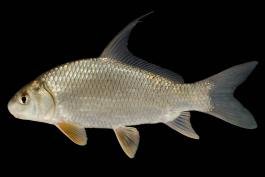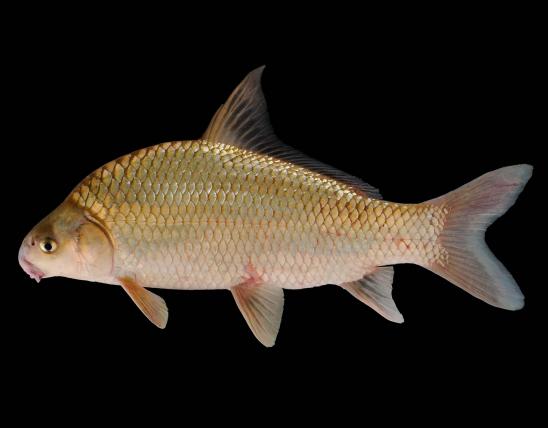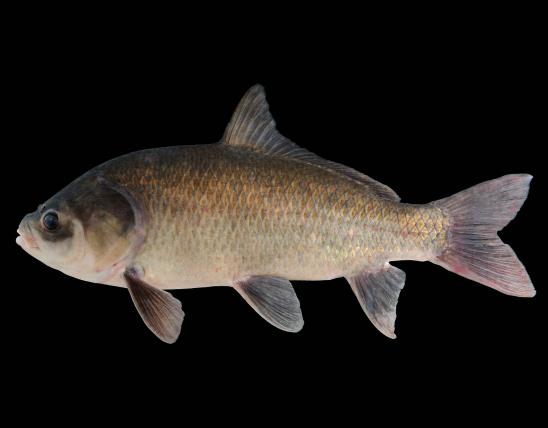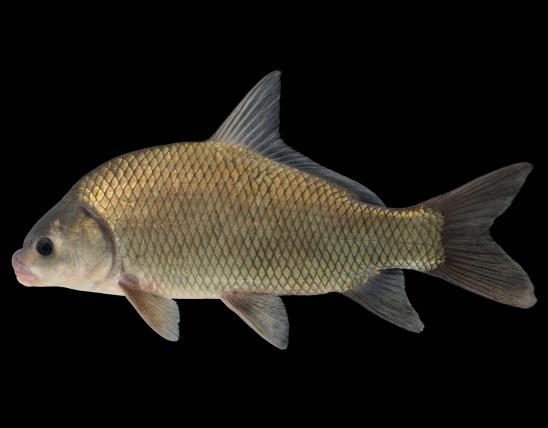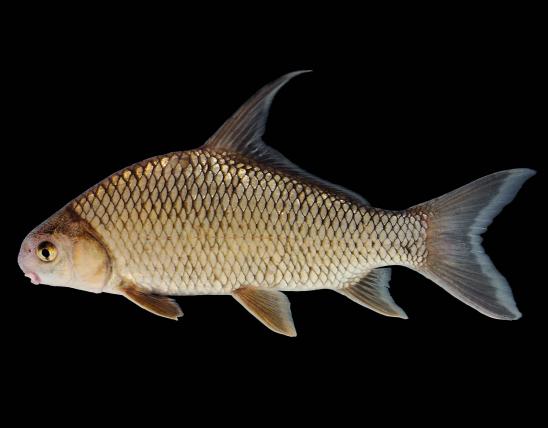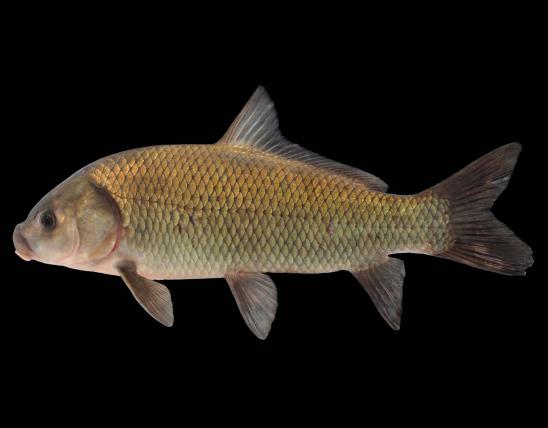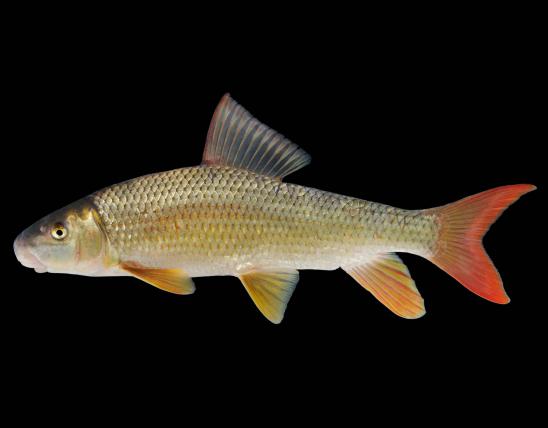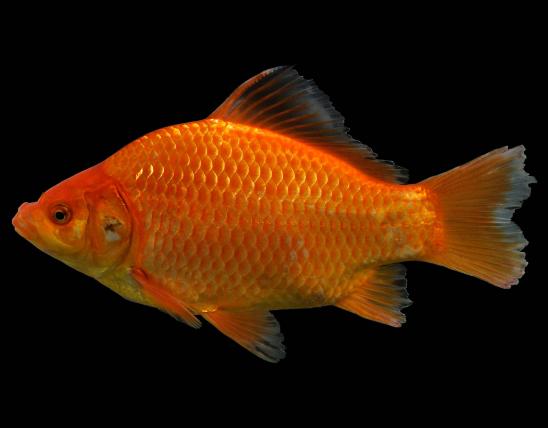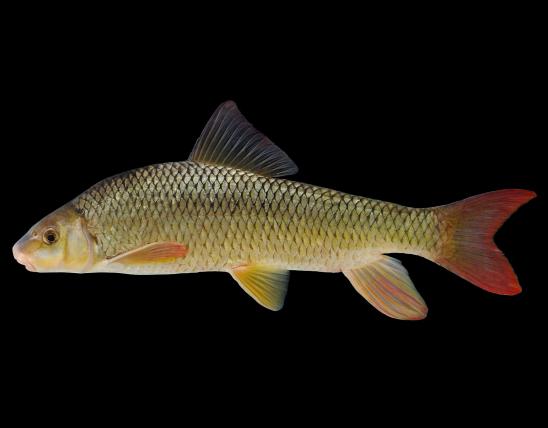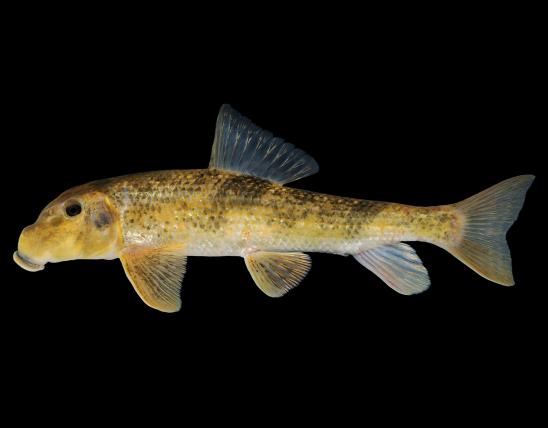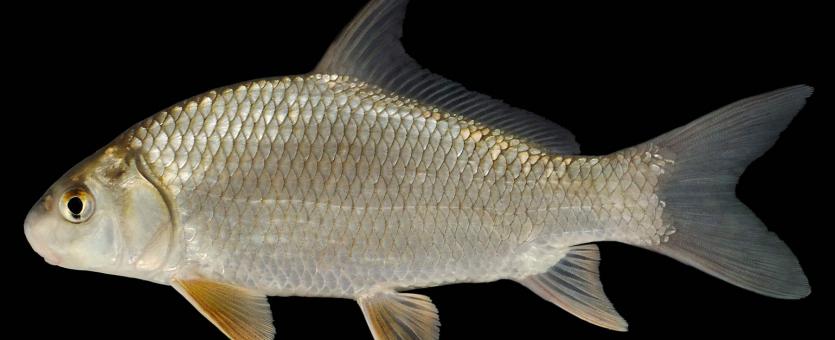
The quillback is a carpsucker with a deep, rather thick body, with a large snout and a long, sickle-shaped dorsal fin. The eyes are moderately large and closer to the tip of the snout than to the rear margin of the gill cover. The lower fins are whitish (unlike buffalofishes, which have the lower fins dark). The overall color is silvery, sometimes with yellowish fins (much like the river carpsucker), but with the sides often having a tinge of golden yellow.
Similar species: The quillback is similar to the river and highfin carpsuckers but it lacks a nipple-like extension on the lower lip, and it has 36–38 (rarely 35) scales in its lateral line (not 23–30). Also, the snout is larger, its length about equal to the distance from the rear margin of the eye to the upper end of the gill opening, and the mouth is farther forward, the upper jaw not extending past the front of the eye. The body is not as deep and is thicker than the highfin carpsucker, its width usually going 2 times or less into its depth.
Adult length: commonly 12–17 inches; weight: commonly 0.8–2.3 pounds. Maximum size in Missouri is about 12.2 inches and 3.7 pounds.
Widely distributed. Most common in the clearer prairie streams of central and northeastern Missouri. Fairly common in the upper Mississippi River and in large reservoirs of the Ozark Uplands. Generally not as abundant as the river carpsucker.
Habitat and Conservation
The quillback is characteristic of moderately clear, highly productive streams having large, permanent pools and stable bottoms composed of gravel and other coarse material. Like other carpsuckers, the quillback inhabits quiet water except when spawning. It is most abundant in moderately large streams but also occurs in creeks if large, permanent pools are present.
The quillback shows a strong tendency to school and undertakes spawning migrations.
Food
Reportedly eats larval aquatic insects, snails, small clams, and algae, along with large quantities of debris.
Life Cycle
Spawning apparently occurs from early April to late May, which is earlier than for other carpsuckers. Adults migrate from deeper, quiet waters to areas of gravelly riffles for spawning. Quillbacks may live to be at least 10 years old.
Human Connections
Carpsuckers are rarely taken on hook and line and are little valued as food. A few carpsuckers are marketed by commercial fishers along the Missouri and Mississippi rivers.
Young carpsuckers are probably of some importance as forage for game fish.
Fish are an amazingly diverse group of animals on planet Earth. Counting the lampreys, sharks, and their relatives, plus all the bony fish, there are some 28,000 species of fishes alive today. The study of fish is called ichthyology.
In addition to their importance as food, fishes intrigue us in home and public aquariums, and many human cultures have viewed fishes as religious symbols, as deities, and as subjects in myth, art, literature, and films.
Ecosystem Connections
Suckers are one of the dominant groups of large fishes in Missouri waters. In many streams, their total poundage may exceed that of all other fishes combined. Each kind of sucker has its own particular habitat preference.
The fleshy, protrusile lips of suckers make them perfectly equipped for sucking up aquatic invertebrates from the bottom.
Small suckers, including the eggs and young of the quillback, are an important food source for other animals, including game fishes.

